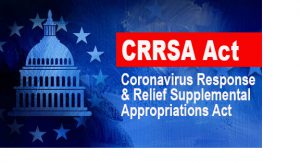Did someone say fall? With the way the summer heat has been, HVAC and BAS systems alike are letting out a sigh of relief now that cooler temps are here for some and on the way for others. Systems that have been hard at work battling high temps and humidity are finally going to be getting a break.
But that doesn’t mean that all signs of humidity will be gone. If it’s been a particularly brutal year, your customer’s system probably needs some TLC to ensure that it’s in good working condition come this winter.
So what kind of TLC are we talking about?
You’ll first need to establish if there have been any issues for your customer during those summer months. Have they been dealing with extra amounts of condensation or moisture? Mold and mildew? Wet spots near the system or a wet/musty smell throughout the building? If they say yes to any of these, then humidity has been a busy bee wreaking havoc on their system.
Help your customer ensure uptime of their system by checking the following:
- Check thermostat(s) for correct settings regarding occupancy levels and room size
- Ensure that all sensors and monitors are in working order or replace if necessary
- Check all mechanical elements of the system to make sure there isn’t buildup from moisture that impedes functionality
- Check ducts and filters
- Ensure that systems are cycling on and off without issue (and at the correct times)
- Check on the system’s coils
- Check airflow intake and outtake along with making sure that the routes the air take are unobstructed
Time for excess humidity to hit the road!
By doing these checks and preventative maintenance around the year, your customers’ systems should be in excellent condition year after year. (If they’re not—well we’re here to get you what you need regardless!)
Don’t let humidity run rampant throughout your customers’ buildings. Show up and show it the door by making smart decisions for your customers. Kele is here to back you up and get you what you need to get rid of excess humidity.



 Do your customers know that they have a deadline to meet when it comes to spending the federal funding they’ve received regarding COVID-19? Well, the Coronavirus Response and Relief Supplemental Appropriations (CRRSA) Act has funds available through September 30, 2023. This is your friendly reminder that such funding will come to an end in a little over a year, so now is the time to spend those funds on critical needs within schools.
Do your customers know that they have a deadline to meet when it comes to spending the federal funding they’ve received regarding COVID-19? Well, the Coronavirus Response and Relief Supplemental Appropriations (CRRSA) Act has funds available through September 30, 2023. This is your friendly reminder that such funding will come to an end in a little over a year, so now is the time to spend those funds on critical needs within schools.

